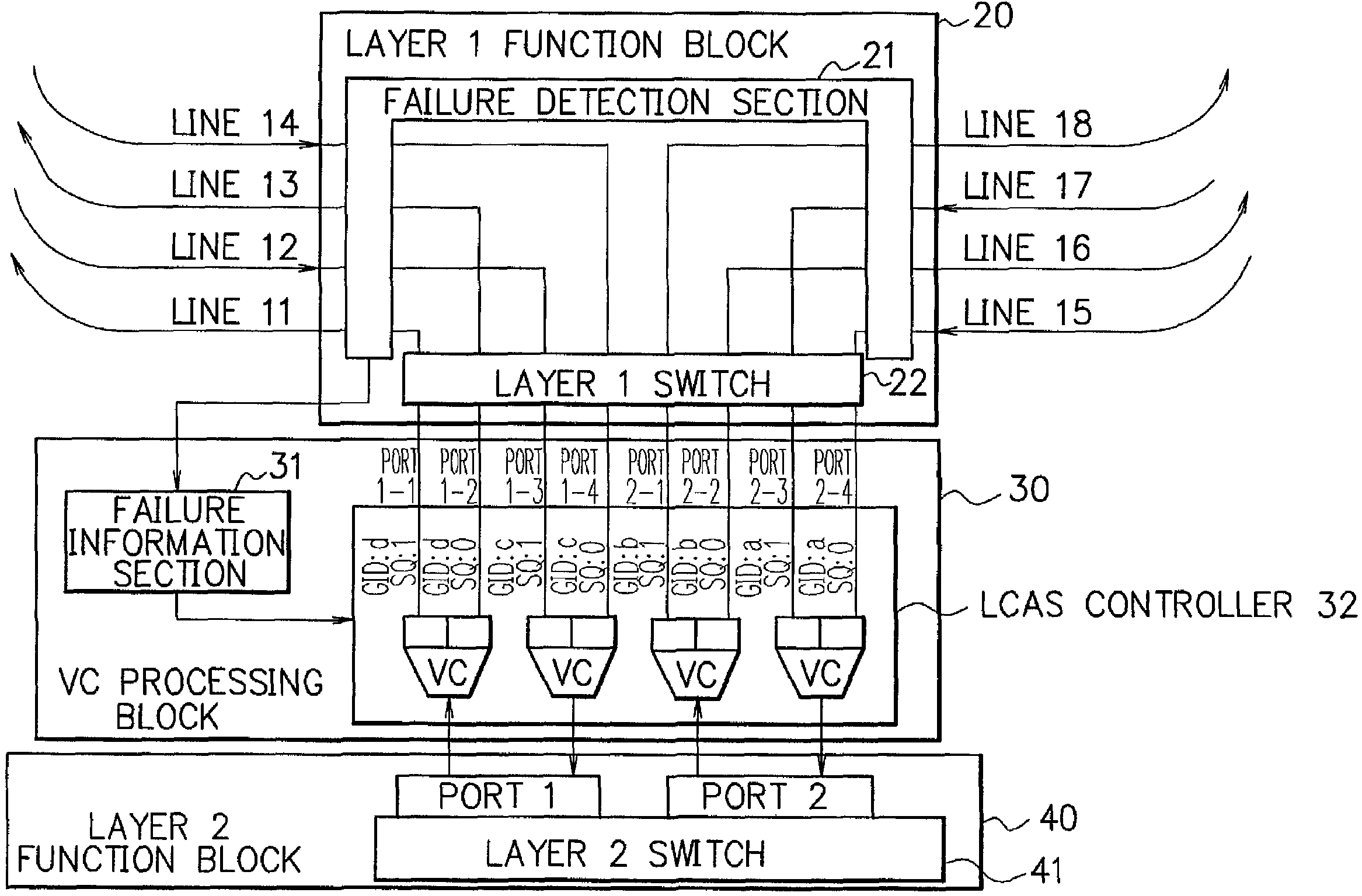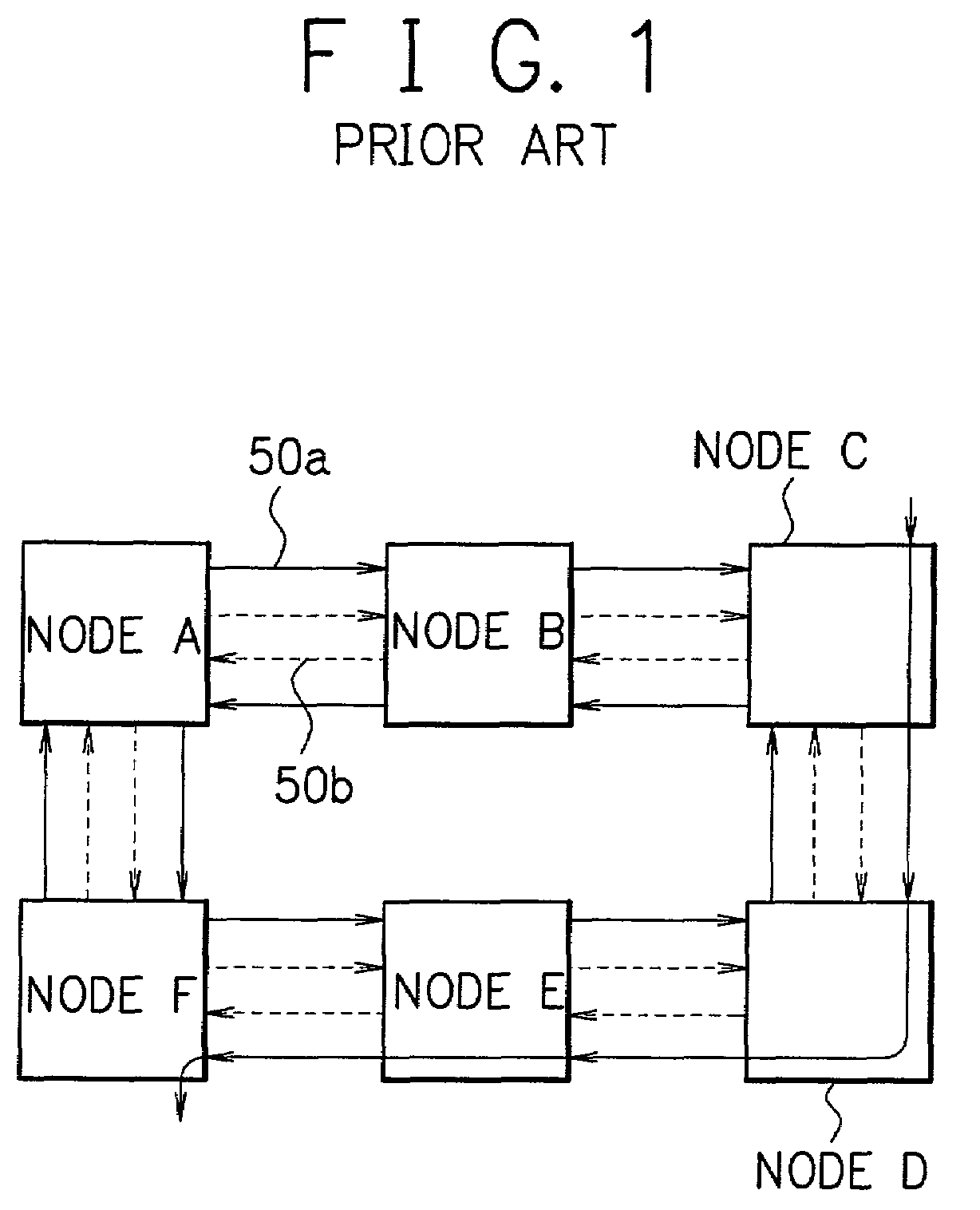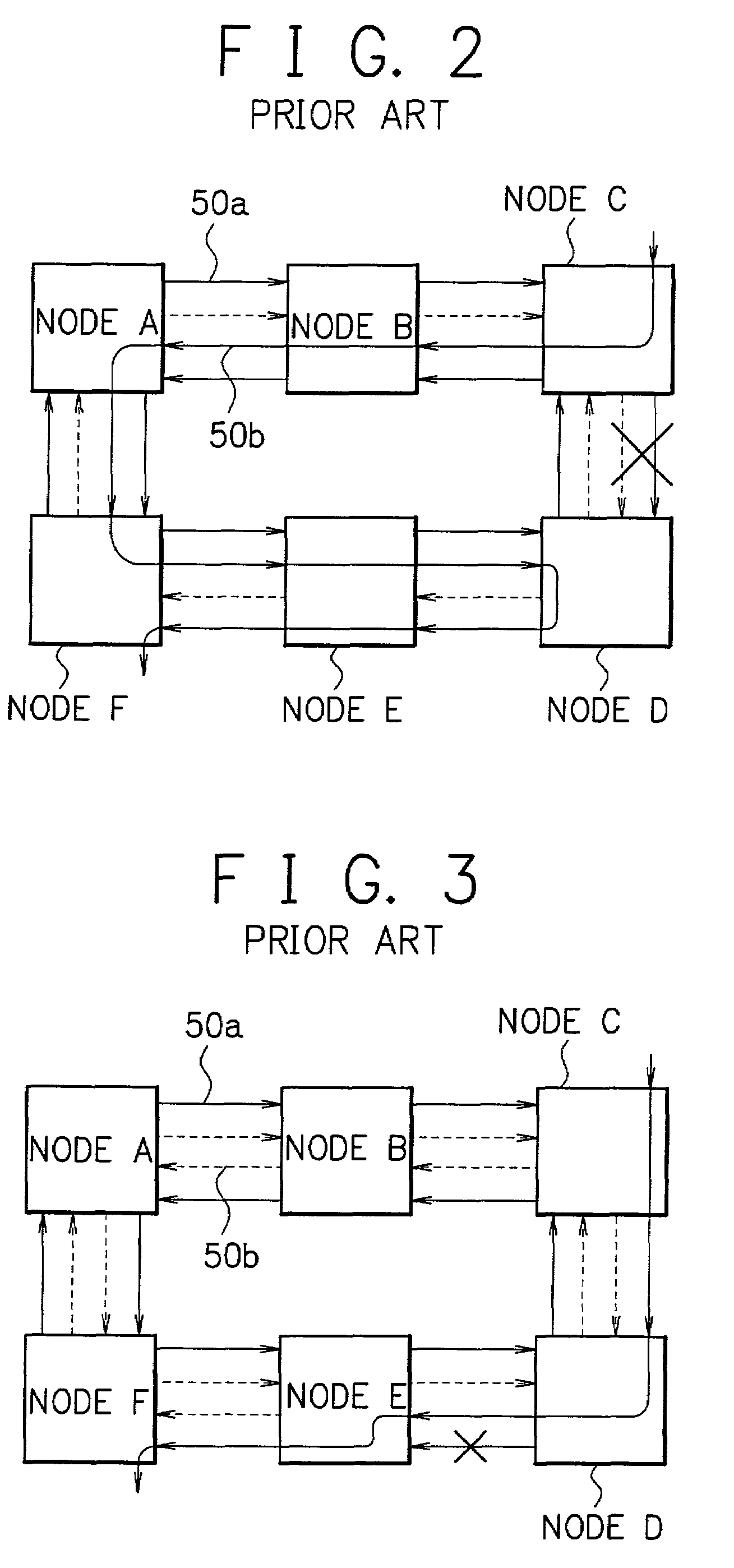Protection system, virtual concatenation processing block, node and ring network
a protection system and processing block technology, applied in the field of protection systems, can solve the problems of inability to protect extra traffic and inability to use working channels
- Summary
- Abstract
- Description
- Claims
- Application Information
AI Technical Summary
Benefits of technology
Problems solved by technology
Method used
Image
Examples
first embodiment
[0070]A ring network in accordance with the first embodiment of the present invention employs the 4-fiber ring, in which the links 1 to 4 shown in FIG. 5 are working channels and the links 5 to 8 are protection channels. BLSR is adopted as the layer 1 protection function. Node:
[0071]FIG. 7 illustrates an example of the composition of the node 10 (10-1) in the ring network of the first embodiment. In FIG. 7, the node 10 includes a layer 1 function block (ring device) 20, a virtual concatenation (VC) processing block 30 and a layer 2 function block 40. In the case of the node 10-1 shown in FIG. 5, the link 1 correspond to the lines (channels) 11 and 12, the link 2 to the lines 15 and 16, the link 5 to the lines 13 and 14, and the link 6 to the lines 17 and 18. That is, the lines 11, 12, 15 and 16 are the working channels, and the lines 13, 14, 17 and 18 are the protection channels.
Layer 1 Function Block
[0072]As shown in FIG. 8, the layer 1 function block 20 connects four SONET / SDH lin...
second embodiment
[0158]While BLSR is employed in the ring network of the first embodiment, UPSR can also be employed as the layer 1 protection function in the ring network in accordance with the present invention.
[0159]In this embodiment, for example, the links 1 and 5 in FIG. 5 are used as the working channel and the links 2, 3, 4, 6, 7 and 8 are used as the protection channel.
[0160]As shown in FIG. 13, when no failure occurs on the network, the LCAS controller 32 treats channels corresponding to the ports 32-1-1 and 32-1-3 as a continuous band by the LCAS process and conducts the data transmission using the band by the virtual concatenation process. The LCAS controller 32 treats the line 14 (ports 32-1-2) and line 13 (32-1-4) as a continuous band by the LCAS process. In this embodiment, when a failure occurs on the network, the lines 14 and 13 can be used and the ports 32-1-1 and 32-1-2 are selected as shown in FIG. 14. The LCAS controller 32 controls the channels to conduct the data communication...
third embodiment
[0165]Although the 4-fiber ring is used in the ring network according to the first embodiment of the present invention, the present invention can also be applied to 2-fiber ring. The third embodiment of the present invention implements the first embodiment by the 2-fiber ring. In this case, each of the links shown in FIG. 5 is constructed by one fiber (cable). Hence, in FIG. 7, the lines 11 and 13 correspond to the link 1 in FIG. 5, the lines 15 and 17 to the link 2, the lines 12 and 14 to the link 5, and the lines 16 and 18 to the link 6. The other parts of the third embodiment have basically the same construction as those of the first embodiment.
[0166]As described above, in the ring network of the present invention, by using the virtual concatenation technique, the working channel and the protection channel are used as a logical one band and a band in the same VC group is eliminated by the LCAS function at the troubled time. Hence, when no failure occurs on the network, a bandwidt...
PUM
 Login to View More
Login to View More Abstract
Description
Claims
Application Information
 Login to View More
Login to View More - R&D
- Intellectual Property
- Life Sciences
- Materials
- Tech Scout
- Unparalleled Data Quality
- Higher Quality Content
- 60% Fewer Hallucinations
Browse by: Latest US Patents, China's latest patents, Technical Efficacy Thesaurus, Application Domain, Technology Topic, Popular Technical Reports.
© 2025 PatSnap. All rights reserved.Legal|Privacy policy|Modern Slavery Act Transparency Statement|Sitemap|About US| Contact US: help@patsnap.com



